Degradation Of Phenols In Olive Oil Mill Wastewater By Biological, Enzymatic, And Photo-Fenton Oxidation
Source: https://www.springer.com
Author: Celine Justino & Ana Gabriela Marques & Kátia Reis Duarte & Armando Costa Duarte & Ruth Pereira & Teresa Rocha-Santos & Ana Cristina Freitas
Background, aim, and scope Olive oil mill wastewater (OOMW) environmental impacts minimization have been attempted by developing more effective processes, but no chemical or biological treatments were found to be totally effective to mitigate their impact on receiving systems.
Only logged in customers who have purchased this product may leave a review.
Related books
Emerging desalination technologies for water treatment: A critical review
Emerging desalination technologies for water treatment: A critical review
Adsorption of Heavy Metals from Multi-Metal Aqueous Solution by Sunflower Plant Biomass-Based Carbons
Adsorption of Heavy Metals from Multi-Metal Aqueous Solution by Sunflower Plant Biomass-Based Carbons
Desalination Technology in South Korea: A Comprehensive Review of Technology Trends and Future Outlook
Desalination Technology in South Korea: A Comprehensive Review of Technology Trends and Future Outlook
Comparison of Wastewater Treatment Using Activated Carbon from Bamboo and Oil Palm
Comparison of Wastewater Treatment Using Activated Carbon from Bamboo and Oil Palm
A Review of the Water Desalination Technologies
A Review of the Water Desalination Technologies
Overview Of The Main Disinfection Processes For Wastewater And Drinking water Treatment Plants
Overview Of The Main Disinfection Processes For Wastewater And Drinking water Treatment Plants
Biofouling of Water Treatment Membranes: A Review of the Underlying Causes, Monitoring Techniques and Control Measures
Biofouling of Water Treatment Membranes: A Review of the Underlying Causes, Monitoring Techniques and Control Measures
Sludge Biotic Index
Abstract
This study aimed to determine the relationship between activated sludge microfauna, the sludge biotic index (SBI) and the effluent quality of a full-scale municipal wastewater treatment plant (WWTP) working with shock organic and ammonium loadings caused by periodic wastewater delivery from septic tanks. Irrespective of high/low effluent quality in terms of COD, BOD5, ammonium and suspended solids, high SBI values (8–10), which correspond to the first quality class of sludge, were observed. High SBI values were connected with abundant taxonomic composition and the domination of crawling ciliates with shelled amoebae and attached ciliates. High SBI values, even at a low effluent quality, limit the usefulness of the index for monitoring the status of an activated sludge system and the effluent quality in municipal WWTP-treated wastewater from septic tanks. It was shown that a more sensitive indicator of effluent quality was a change in the abundance of attached ciliates with a narrow peristome (Vorticella infusionum and Opercularia coarctata), small flagellates and crawling ciliates (Acineria uncinata) feeding on flagellates.
Sludge Biotic Index
Abstract
This study aimed to determine the relationship between activated sludge microfauna, the sludge biotic index (SBI) and the effluent quality of a full-scale municipal wastewater treatment plant (WWTP) working with shock organic and ammonium loadings caused by periodic wastewater delivery from septic tanks. Irrespective of high/low effluent quality in terms of COD, BOD5, ammonium and suspended solids, high SBI values (8–10), which correspond to the first quality class of sludge, were observed. High SBI values were connected with abundant taxonomic composition and the domination of crawling ciliates with shelled amoebae and attached ciliates. High SBI values, even at a low effluent quality, limit the usefulness of the index for monitoring the status of an activated sludge system and the effluent quality in municipal WWTP-treated wastewater from septic tanks. It was shown that a more sensitive indicator of effluent quality was a change in the abundance of attached ciliates with a narrow peristome (Vorticella infusionum and Opercularia coarctata), small flagellates and crawling ciliates (Acineria uncinata) feeding on flagellates.



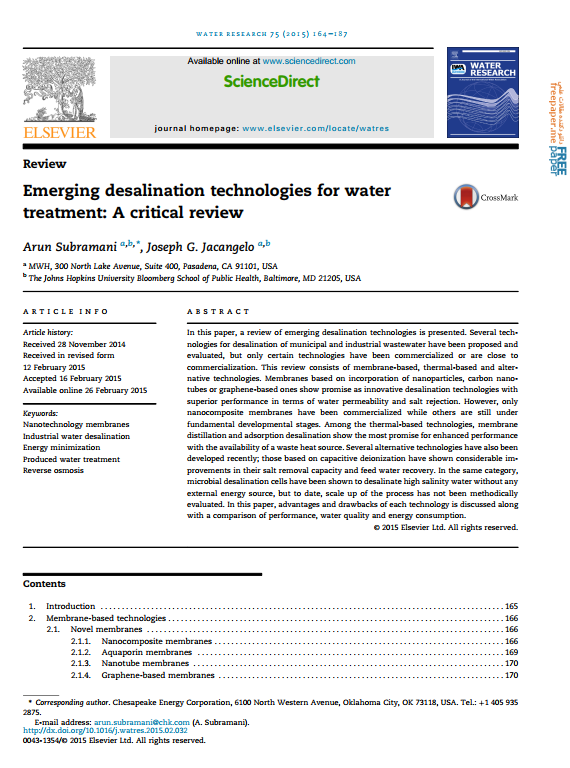
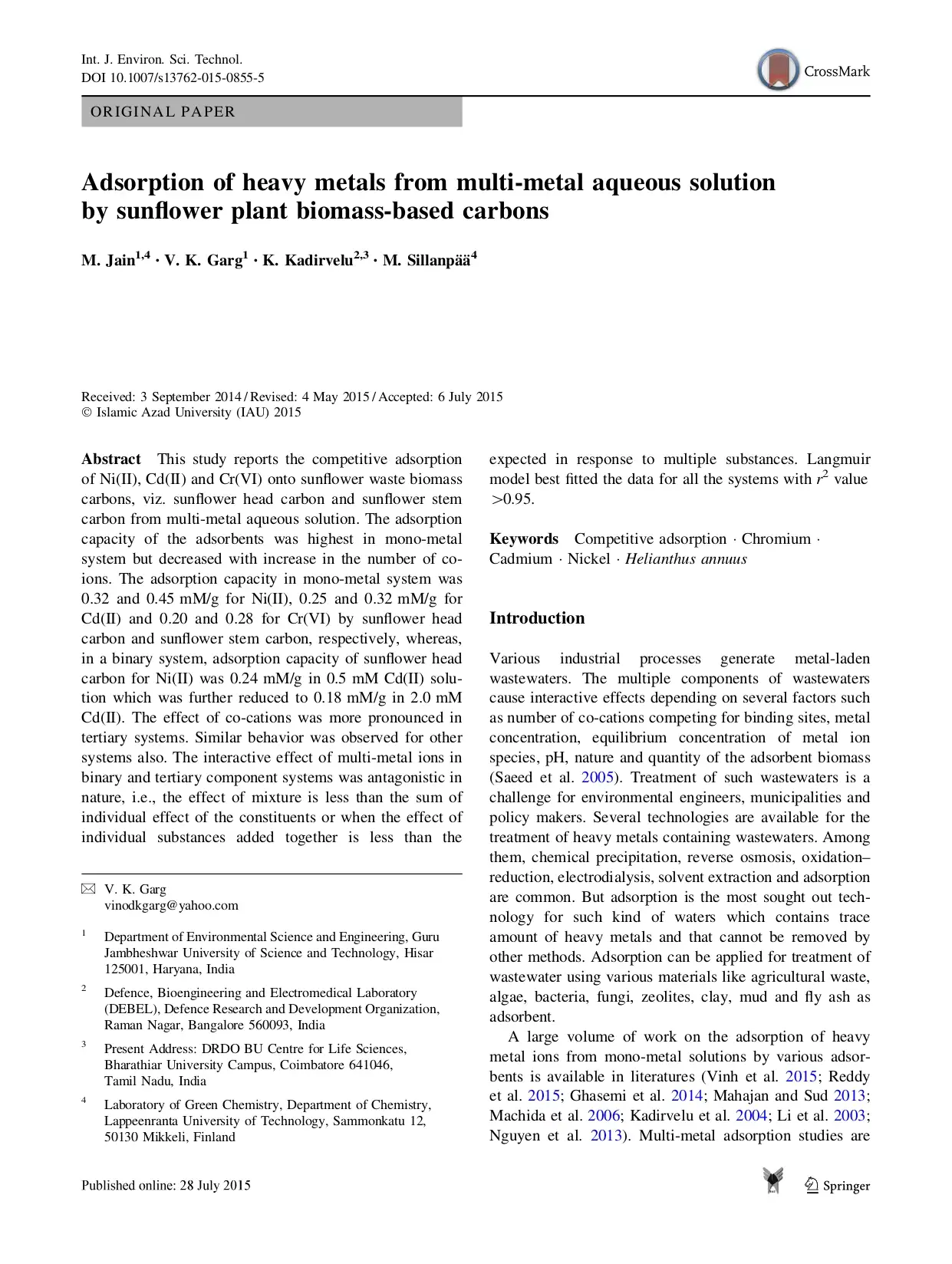
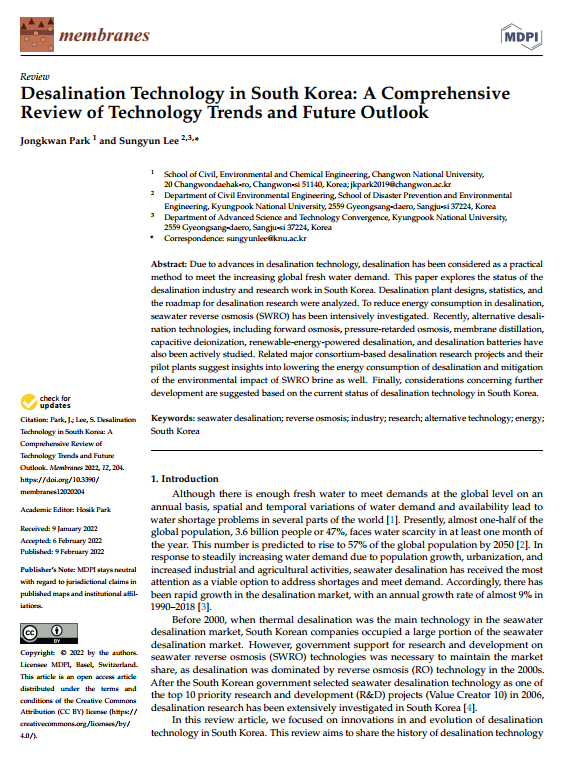
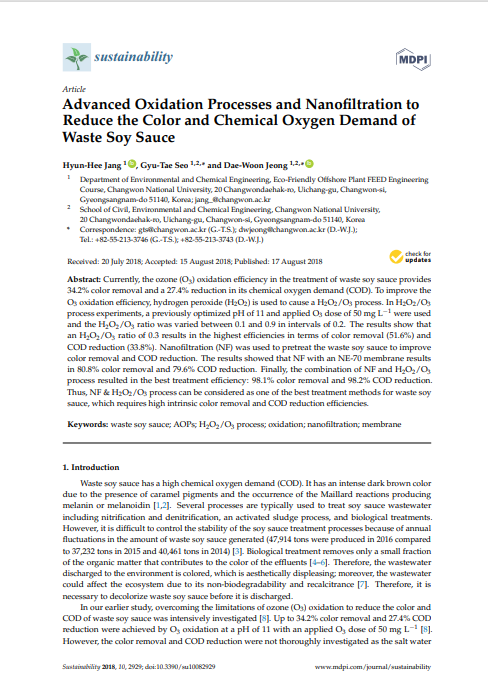
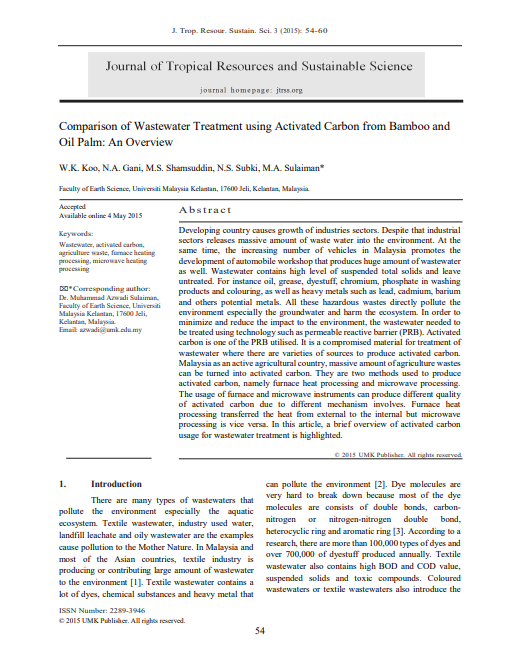

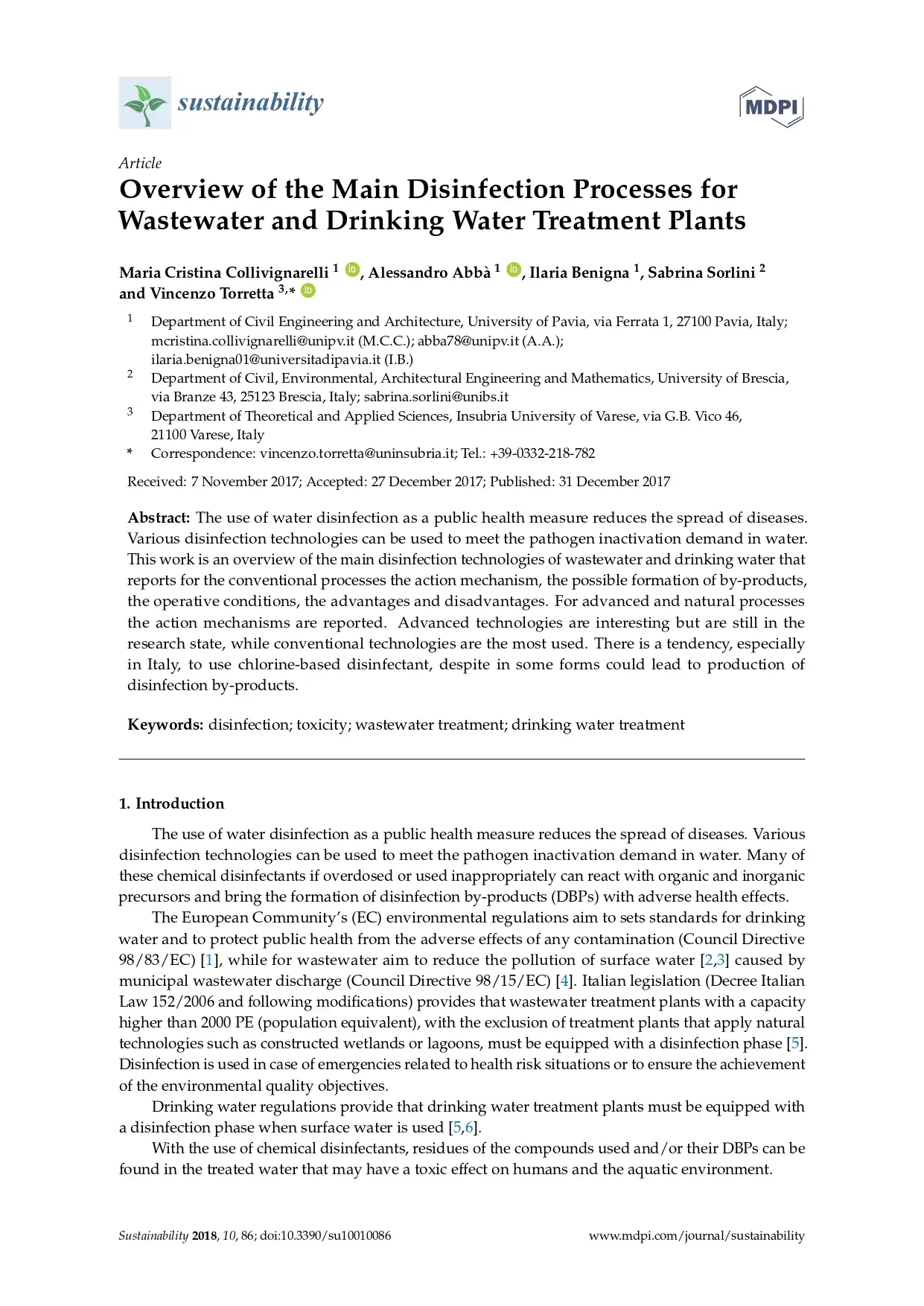

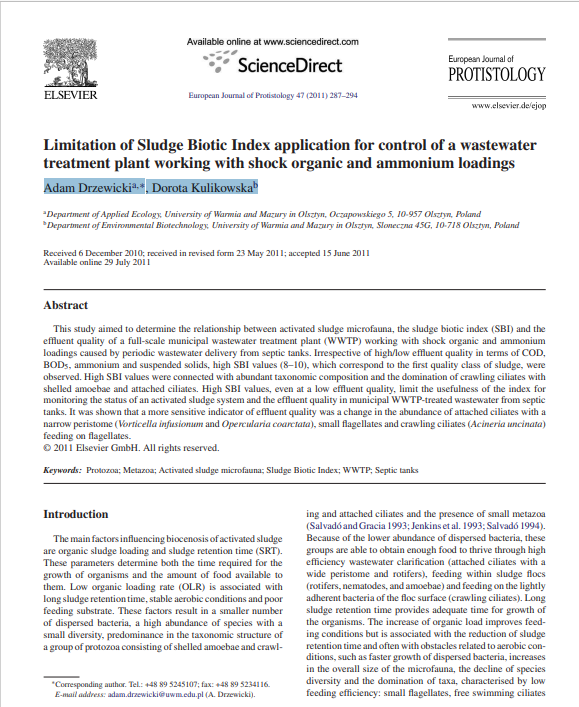
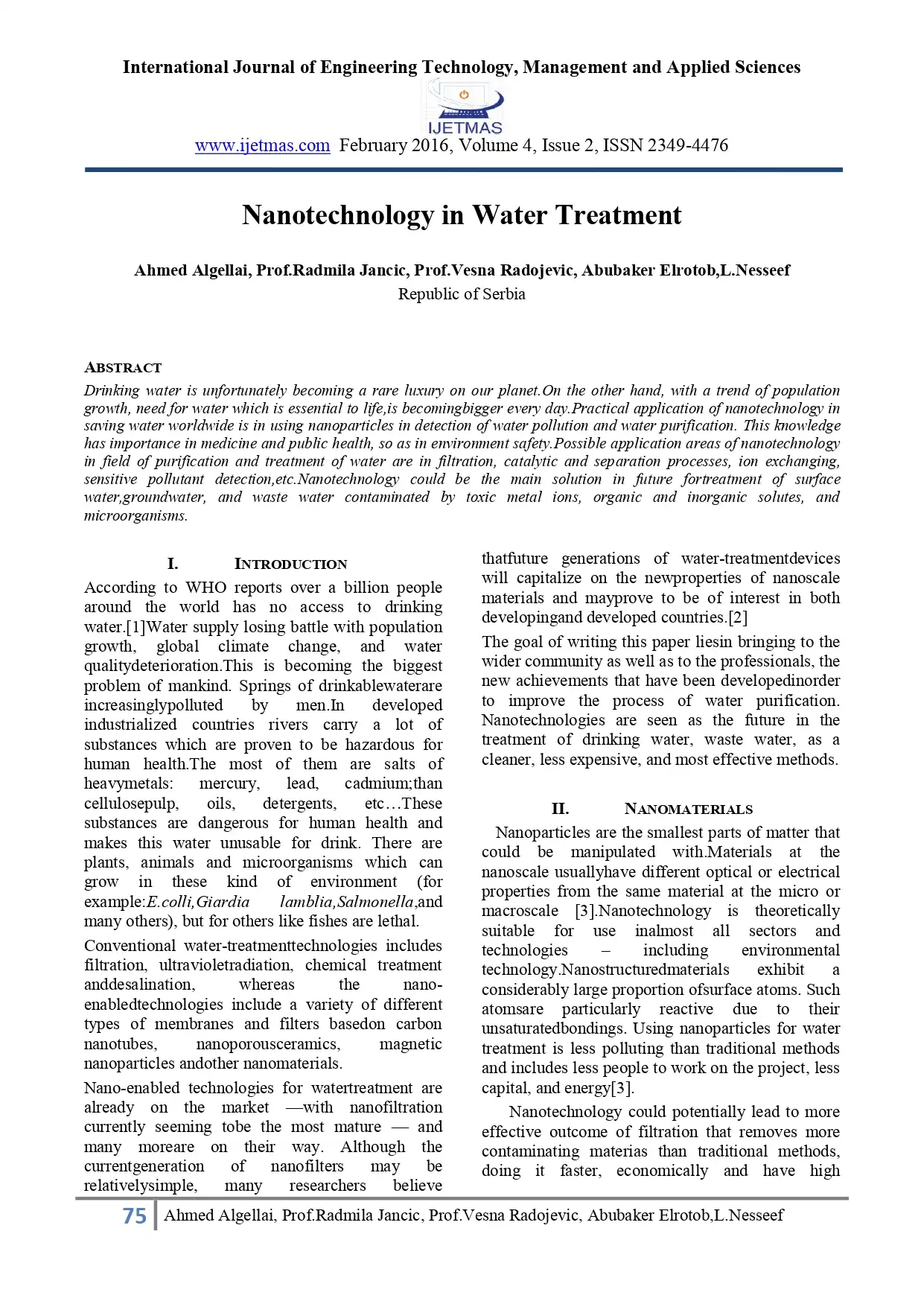
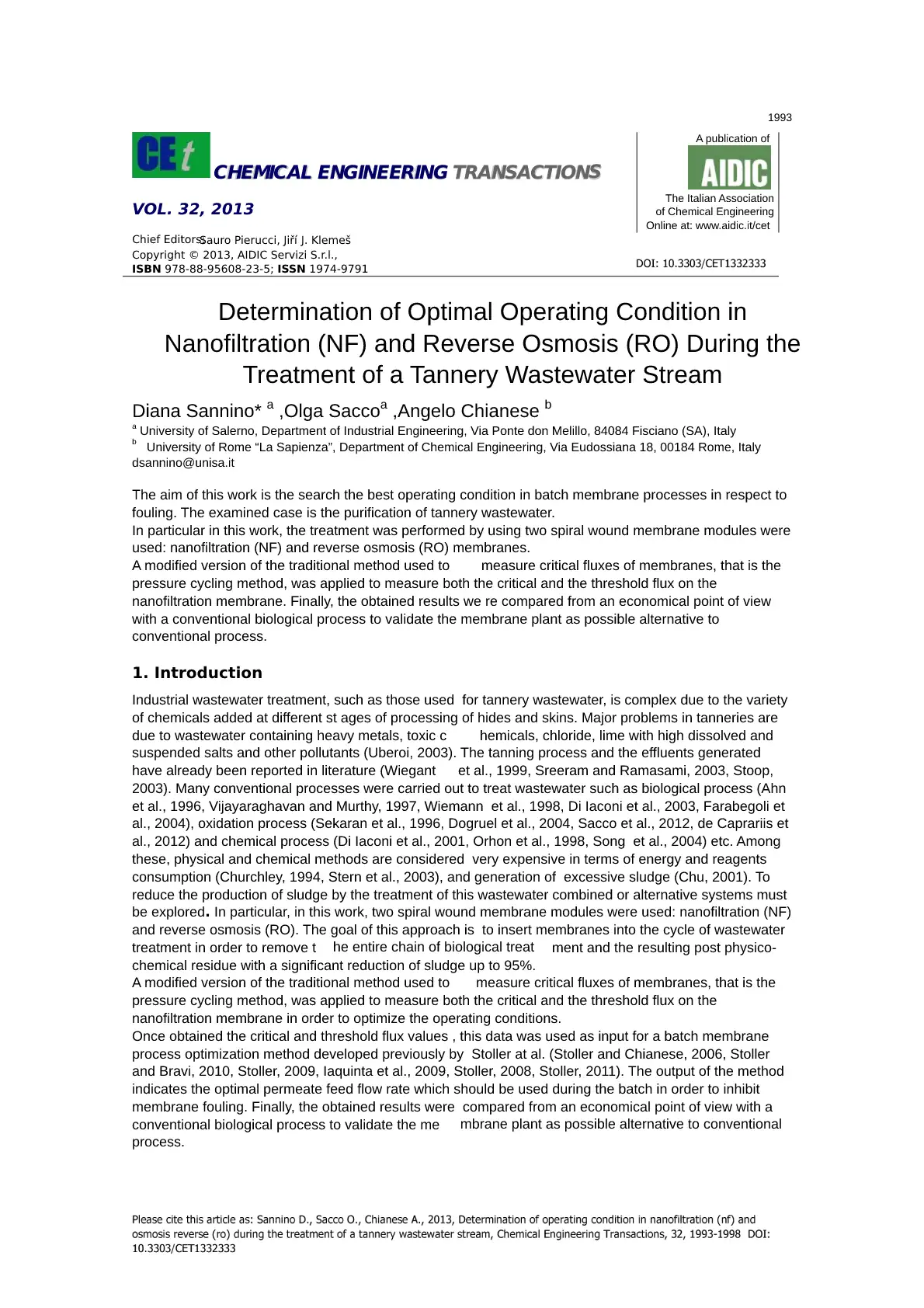
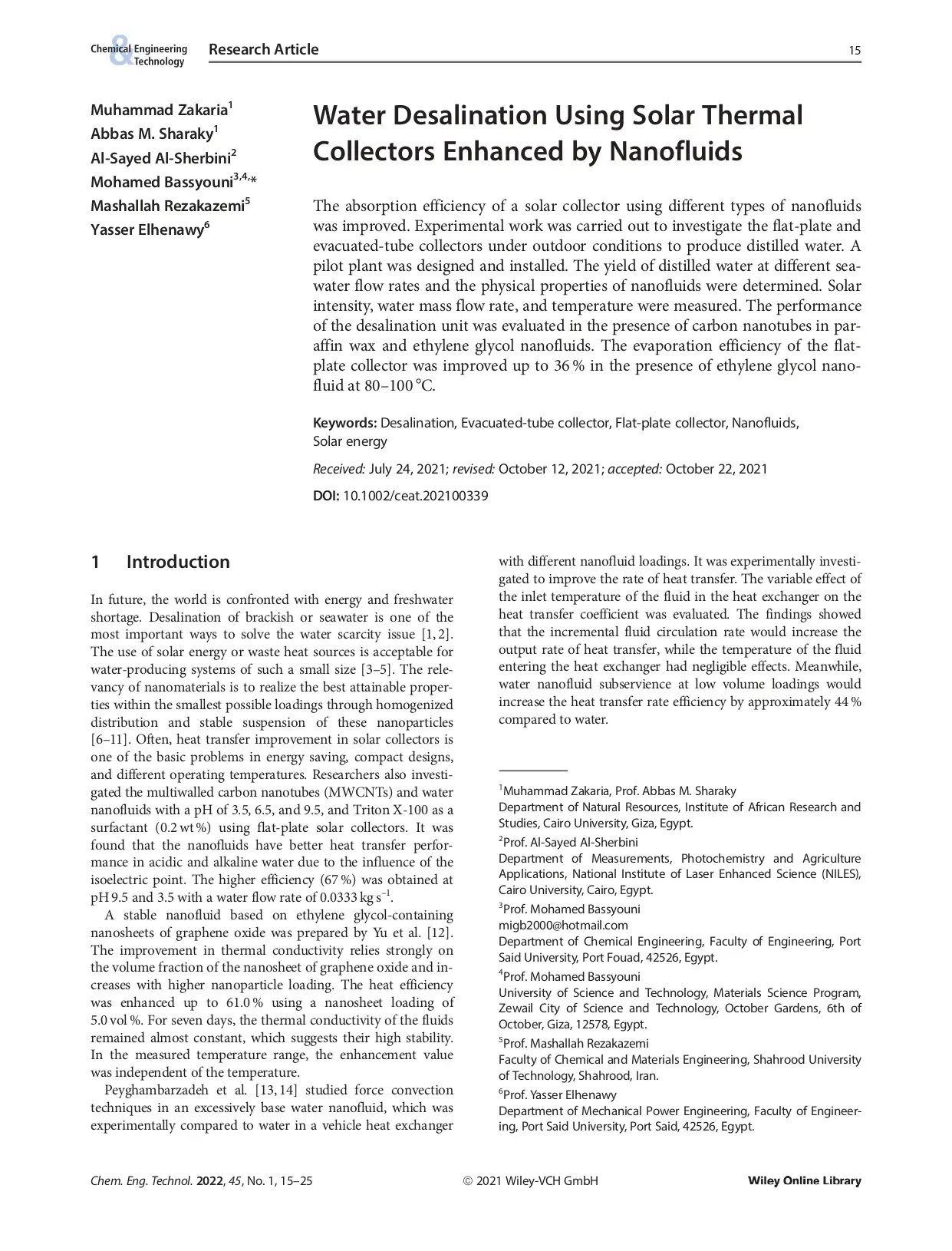
Reviews
There are no reviews yet.